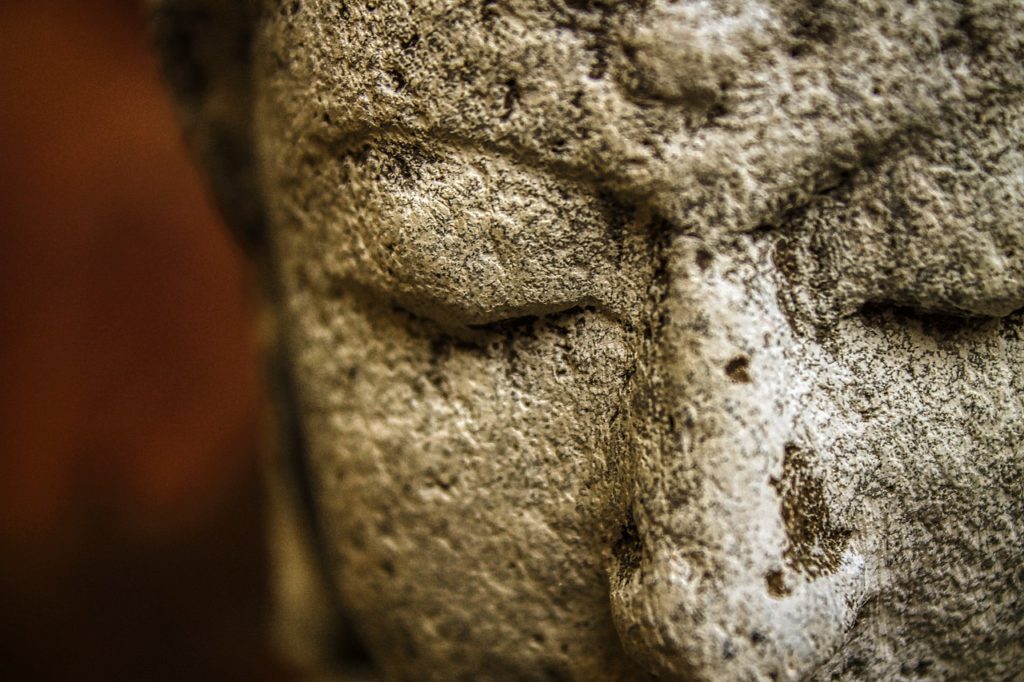The ability to observe and detach from your thoughts is the door to your freedom.
Up to 70,000 thoughts run through your head every day. Most of them are the same thoughts as the day before.
Learning to be the observer self, aware of your thoughts, can help you move forward in life and open yourself up to possibilities.
Let’s dive right into it.
7 Proven Strategies To Detach From Your Thoughts
#1 Set An Intention
One way to start is to make the decision that you are choosing to be aware of the thoughts going through your mind. Send your intention out with a verbal statement either in your mind, out loud, or written.
Intention carries with it a creative power. It guides your action, gives you an objective and influences your actual experiences.
#2 Mindful Awareness
Imagine sitting in a field on a sunny day. There’s a slight breeze and you look up at the sky. You see fluffy clouds moving gently. You feel light and peaceful.
It’s obvious that you’re watching the clouds. They are not you. Yet, they’re making you feel a certain way.
Your thoughts are similar to this.
This is one way to become aware of the quality of your thoughts and how they feel in your body.
Conversely, the feeling in your body may be easier to notice before you’re aware there was a thought behind it.
Every thought we have sends a signal, by way of chemicals made in the brain, to an area of the body that resonates with that thought. This is why emotions or feelings originate with a thought.
Being mindful of the feeling and aware of the thought is a huge step in observing what’s going on in your mind. It’s something to celebrate because the majority of people don’t get to this point.

#3 Use Your Breath
The breath is the best tool you have for many reasons, readily available to the self at all times.
Focusing on your breath as it enters and exits your body, feeling what it feels like, and using long slow exhales, begins to ground you. It brings you into the present moment where you can step into the observing self position.
Notice the thoughts that come up as though they are clouds moving across the clear blue sky without getting lost in the story of the thoughts.
If you find you do get lost in the story, just step back into focusing on the breath and let go of the story.
#4 Question The Thought
Once you’re aware of a thought, focus on one thought at a time without the story behind it. Take it out of your mind and look at it from a distance. Then question if it’s really true.
It may have been your thought, but you don’t have to believe it.
There are many things we’re taught by other people throughout our lives and some are seemingly trivial. However, when being the observing self, we find they had more of an impact on who we’re being than we realized.
#5 Mind Your Feelings And Actions
As the observing self, notice the emotions the thought gives you in your body and where. Describe it as an entity outside the self.
This helps you detach from the emotions because they are not you. They are merely feelings in your body.
Then notice what you do, and how you behave, when you have that thought and feeling.
#6 Practice Meditation
Take the time to be with yourself in meditation. Observe the thoughts you’re struggling with and follow them to their origin by seeing them from a distance.
You may sense that these thoughts or beliefs have been taught to you by someone else and are not actually true for you.
See them as the clouds in the sky. They’re going by the field in your mind.
They’re not you.
Find other perspectives that you sense as more true for you.
Let them go.
#7 Welcome The Unknown
Letting go of the familiar, can feel scary. However, the unknown is the field of possibilities where you are able to recognize opportunities.
Remaining immersed in illusions from the attachment to thoughts that aren’t true doesn’t leave room for new experiences.
So the observer self allows you to feel the excitement of living in the unknown realm of possibilities.
Remind yourself, “I’m enough” and worth it!

Observing Yourself
Stepping into the observing self is an awareness practice of turning your attention inward. Then, without judgement, watch what you think, feel, and do.
The overserving self sees you from a distance. Either, as if you are looking down at yourself from above, or looking up at your thoughts. You are the observer of the self.
You practice noticing thoughts that go through your mind as separate from you.
Whichever way works best for you, this mindfulness practice can help you detach from your thoughts as you notice what you think on a regular basis. Some of the thoughts you’re thinking could even surprise you.
Sometimes you’ll find it’s best to observe your feelings or emotions which will lead you to a subconscious thought you didn’t know you were repeatedly thinking.
The observing self may notice thoughts like “I’m a loser” can be changed to the thought that “I am having the thought that I’m a loser.”
This helps to identify less with disturbing thoughts. It puts us in the position of the observing self rather than just plain thinking that way without noticing.
We can mentally note the toxic way we think rather than automatically accepting them as being who we are.
What Is The Observer Self?
The observing self is when you access the transcendent sense of self, the continuity of consciousness which is unchanging.
Tuning in to the observer self is the cornerstone of Acceptance and Commitment Therapy developed by Dr. Stephen Hayes.
Acceptance and Commitment Therapy, known as ACT, combines CBT (Cognitive Behavior Therapy) principles with mindfulness techniques.
In a process called Cognitive Fusion (attachment to thoughts), your automatic thoughts are seen as being fused to your mind and end up distorting your perceptions.
By defusing from your mind, and becoming the observing self, exposing those automatic negative thoughts can help you see things more accurately.
The observing self is the self that always lives in the present moment and watches what happens inside of you. The part of you that is aware.
As in the exercise above, the observing self is the self who is aware of the clouds moving, of the sky, and of observing them as being separate from the observing self.
How Can I Be An Observer Of My Thoughts?
The first step is to practice awareness of emotions or ways of being that we wish to change.
One exercise is to use the breath, you can start looking at your thoughts rather than living from your thoughts. The breath is a great tool to use in beginning to be aware of the observing self.
Focusing on your breathing shifts your attention from your automatic patterns. It anchors you in the present moment, focusing your attention inward, and quieting your mind.
When you notice thoughts come up. Allow them to pass one by one without getting lost in the story that goes with the thought.
Something the ego will do is to convince you of something that’s not necessarily true just to save you from feeling vulnerable in some way.
For example, you may have been up for a job you really wanted and didn’t get. You feel disappointed. Your ego could bring up an old pattern by telling you, “you’re not good enough”, “you’ll never get anywhere in your career”, etc.
The truth is nothing’s actually changed except your thoughts about the event. You still have potential to move forward in your career, if you choose to believe it. The actual situation is the same as it was before.
You can sense the difference between one thought being true or false when you tune inward. Be discerning for the times the ego tends to take over.

How Do You Observe Your Thoughts Without Judgement?
While meditating or practicing mindfulness you’re in a state of focused awareness. This is a state that many people find themselves in when they exercise routine.
They are focused and aware of the feelings targeted in specific areas of the body while performing a specific movement.
This is helpful because every thought we have triggers feelings in the body. With those feelings we have an outward reaction.
Your observing self will not judge the thoughts, only the ego does this by justifying itself with the story about the thought.
So by diffusing the power of the thought by having the observing self question the truth of it you will give less power to the problems in your life.
How Do You Witness Your Thoughts?
Being able to witness your thoughts is a skill that just takes practice. It could feel difficult and uncomfortable at first, just like learning any new skill.
Practicing mindfulness or meditation by learning to be the witness to your thoughts and reactions is something that takes time, patience, and compassion for yourself.
Keep it consistent and set daily reminders so you can stay motivated to practice this skill. Find the method that works best for you.
Very important in this process is not to beat yourself up if you fall back into the old habit of attaching to your thoughts.
You’ve lived your life in the habit of being attached to your thoughts. It takes time to break it. There are bound to be times when you go back into the habit you’ve lived your life in.
Try being the observing self because this is the way to freedom in your life and to being able to navigate the stormy skies that otherwise would cloud your judgement.
Again, remind yourself, “I’m enough” and worth it!
If you’ve found value in reading this article, please forward to someone you know who may appreciate knowing this information too.
Related Posts
Online Life Coach: The Complete Guide
Mindset Coaching – 13 Facts Checklist
Mental Health Coach – 11 Facts Checklist
